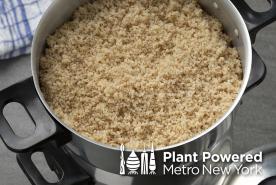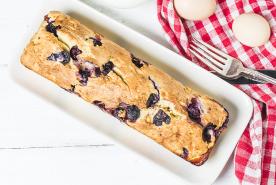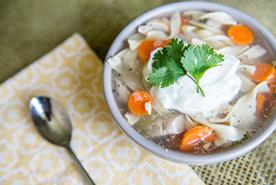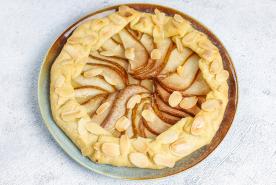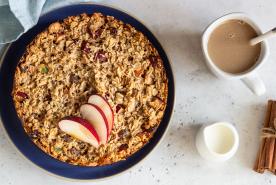August 12, 2014
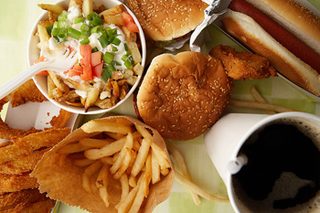 15 Healthy and Convenient "Fast Foods"
15 Healthy and Convenient "Fast Foods"
For many people, “healthy fast food” is a contradiction. But according to the National Kidney Foundation, healthy, fast foods do exist, so it’s not necessary to sacrifice your health for convenience!
Stock up on these 15 items which all have a long shelf life and you’ll have the ingredients on hand to make quick and healthy snacks and meals. Having these in the house when you don’t have a chance to run to the store will prevent a last minute dash to the drive-thru.
Be creative about combining ingredients and don’t feel constrained by recipes. Here are some ideas to get you started. If you feel more comfortable following a recipe, take a look at the Kidney Kitchen. To enhance flavor while avoiding salt, incorporate herbs, salt-free spices or garlic.
If you have chronic kidney disease or if you are on dialysis and need to limit certain foods in your diet, check with your doctor or dietitian before making any dietary changes. The information in this article is intended for those who want to protect their kidneys and those who are at risk for developing kidney disease, not those who already have kidney disease.
- Frozen fruits. Look for the ones with no sugar added. These can be eaten plain, quickly thrown into the blender to make a smoothie or even sprinkled on top of yogurt.
- Pasta sauce and canned or crushed tomatoes. Check the ingredient list to make sure there isn’t any added sugar added in the sauce or added sodium in the canned tomatoes. Cooked tomatoes are actually higher in lycopene than fresh tomatoes because the heating process brings out this antioxidant in a higher concentration.
- Frozen veggies. Surprisingly, many flash frozen vegetables are often more nutrient-packed than their fresh counterparts because they are frozen right after being picked when the nutrients are at their highest levels. Just make sure there is no added salt (sodium). These can be boiled quickly or added in a skillet to pre-made pasta sauce to increase the amount of vegetables and fiber in your meal. Quick and easy!
- Whole grain dried pasta. Boil some water and within 15 minutes you can have a complete meal. Add frozen veggies such as broccoli to make a heartier and more filling dish. The possibilities of pasta and vegetable based dishes are endless, so get creative! Here are a few ideas to help you get started: cold pasta salad with olive oil, and chickpeas for added protein, add frozen spinach to pre-made red sauce for a boost of vitamins and minerals such as lycopene vitamin A, vitamin C and iron.
- Think beyond the bread. Whole grain wraps, pita, or tortillas can all be used to hold together a substantial meal. These usually stay fresh for a few weeks in the refrigerator, but be sure to check the sell by and use by dates. Make a wrap, pita pocket or quesadilla with different ingredients. Hummus and avocado pair nicely with both meat and vegetables in a wrap-style sandwich depending on what you have on hand.
- Canned beans. Buy a variety of different types. Beans are a low cost, low fat, high fiber, high protein meat alternative with a very long shelf life. Look for the low sodium variety or rinse thoroughly with water to cut the salt used in preparation and storage. Make a three bean salad and season with herbs and a touch of olive oil and vinegar. Black beans can be used to make a hearty taco or quesadilla. Throw chick peas into the food processor with some olive oil to quickly whip up homemade hummus. Beans are high in potassium and phosphorus, so speak with a renal dietitian if you need to limit these.
- Eggs, egg whites or egg substitutes. You can prepare eggs a variety of ways: hard boil eggs and keep them in the fridge for a grab and go snack. Make an omelet or egg sandwich for a satisfying, protein filled meal. For heart health, limit egg yolks to 3 per week.
- Apples. Apples stay fresh in the refrigerator for a while and are low in calories, high in fiber. Packed with powerful antioxidants, apples are easy to eat as a snack or take on the go! Pair an apple with peanut butter or cheese for protein or add to a salad for crunch. For a quick dessert with little prep, try a new twist on apple pie al a mode -- bake an apple with cinnamon and top it with a spoonful of low fat yogurt.
- Popcorn. Popcorn is a whole grain food. Reinvent this movie theatre classic by popping it with an air popper and holding the salt and butter. There are many sodium free seasonings that can be sprinkled on top to change the flavor. In the mood for a sweet snack? Try cinnamon. Savory? Shake some garlic powder and add a sprinkle of parmesan. Spicy? Add a dash of cayenne pepper.
- Yogurt. Can be eaten on its own, but plain yogurt can also be used as a substitute in recipes that call for mayonnaise or sour cream which are higher in fat. Create your own yogurt flavors by adding fresh or frozen fruits rather than buying pre-flavored yogurts. Greek yogurt is thicker and higher in protein than other types of yogurt. If plain Greek yogurt is too tart for you, try to add a tablespoon of honey to sweeten it.
- Oats. Oats and other grains high in dietary fiber have been shown to reduce cholesterol levels. With quick cooking oats, you can cook up some oatmeal for a healthy, fast breakfast in under 15 minutes. Muffins and even baked goods like cookies benefit from a boost of oats. Remember that portion control is key for cookies and other desserts.
- Quinoa. The name quinoa may sound intimidating, but it’s very easy to prepare following the directions on the box. Quinoa is high in protein and also contains calcium, phosphorus, magnesium and iron. Add beans and vegetables and you have a savory meal. For breakfast, top quinoa with a dollop of yogurt or honey or preserves. It can be made ahead of time and eaten cold or hot if re-heated.
- Low-sodium canned tuna. Tuna is kidney-friendly and an inexpensive source of protein. Make homemade tuna salad with yogurt instead of mayo and throw it into a pita for a delicious meal.
- Low-sodium chicken broth or bouillon cubes. Make a quick and easy soup by heating these up and adding some noodles and frozen veggies to make a noodle soup.
- Frozen edamame. Edamame are Japanese soybeans. High in protein and fiber and green in color, edamame can be boiled and eaten hot or cold. Mix them with black beans and corn and you’ll have a colorful and crunchy bean salad.






